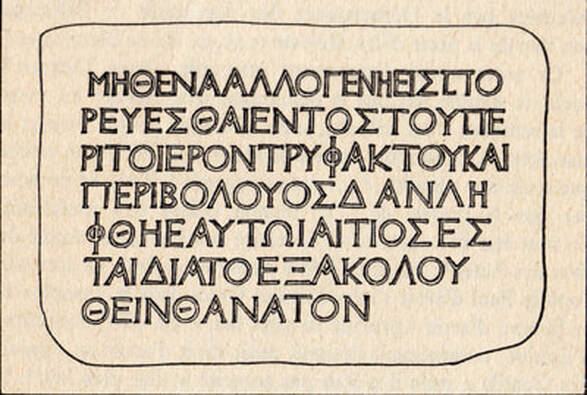Hebrew: In Jesus’ time, Hebrew was the main language of the Jewish religion. We know that most religious documents were still written in Hebrew in the centuries after the Babylonian exile – including the latest books of the Old Testament and most of the Dead Sea Scrolls. All of the inscriptions that have been found in the area of the Jerusalem temple are written in Hebrew, The inscriptions on Jewish coins were in Hebrew indicating its widespread usage, and there is evidence from the Jewish historian Josephus and other sources that many of the people in Jerusalem could also speak Hebrew. It is also likely that in Galilee, which was culturally quite conservative, Hebrew was also understood by many people. But even though Jesus probably knew Hebrew, he likely would not have spoken the language with his disciples and the crowds he taught, as many would not have understood him.
Aramaic: As we mentioned above, the Aramaic language was adopted by the Jews during and after the Babylonian exile. Portions of some of the later books of the Old Testament were written in Aramaic, showing its increasing importance for the Jews, and there is no doubt that Jesus knew the language. A Galilean dialect of Aramaic was widely spoken in his home area and the Gospels of Matthew and Mark record Jesus using many Aramaic words such as abba “father” (Mark 14:36) and racca “fool” (Matthew 5:22), as well as phrases such as Eli Eli lema sabachthani meaning “My God, my God, why have you forsaken me?” (Matthew 27:46). The Aramaic language is likely to have been used constantly by Jesus and his disciples in their daily lives.
Greek: Generally speaking, this language was spoken among the Jewish diaspora visiting Jerusalem; among those involved in regional trade and commerce; and among the more educated Jews. In fact, an amazing 68% of the inscriptions found in tombs and other archaeological sites in Israel from that period are in Greek. And there are many indications in the New Testament that Greek was sometimes used by or spoken to Jesus. For example, when Jesus talked with the Syro-Phoenician woman (Matthew 15:22-28), it is likely she spoke Greek, and Pilate’s speech to the Jews after the arrest of Jesus (Mark 15:2–5; etc.) was almost certainly in Greek as he would not have known Hebrew or Aramaic and they would not have known Latin. On many occasions, it appears that Jesus quoted scriptures from the Greek Septuagint or a similar Greek translation of the Hebrew Bible as their wording is different from the Hebrew text and closer to that of the Greek (Isaiah 61:1-2; etc.).
Latin: Although there are some Latin words in the New Testament, the language was not commonly spoken and there would be no real reason for Jesus to have known it. When the Roman Governor Pilate spoke to Jesus, he may have spoken through an interpreter, or he could very possibly have spoken in Greek.
So the evidence indicates Jesus may have spoken three of the four major languages used in first-century Judea. While Jesus’ “first” language was probably Aramaic, he likely knew quite a lot of Hebrew and was probably also familiar with Greek. As with many people who grow up in multilingual areas, which language he spoke at a given time would have depended on where he was and the audience he was addressing. But knowing that Jesus probably spoke several of these languages can help us to better understand what he might have actually said in some circumstances, where the New Testament simply records his words in Greek, but he was speaking to individuals or groups with their own “first” or preferred language.

 RSS Feed
RSS Feed
